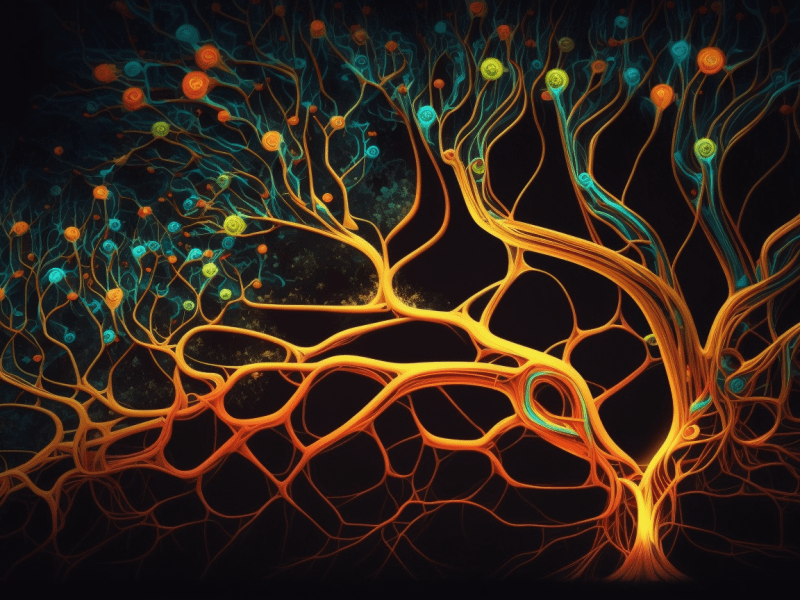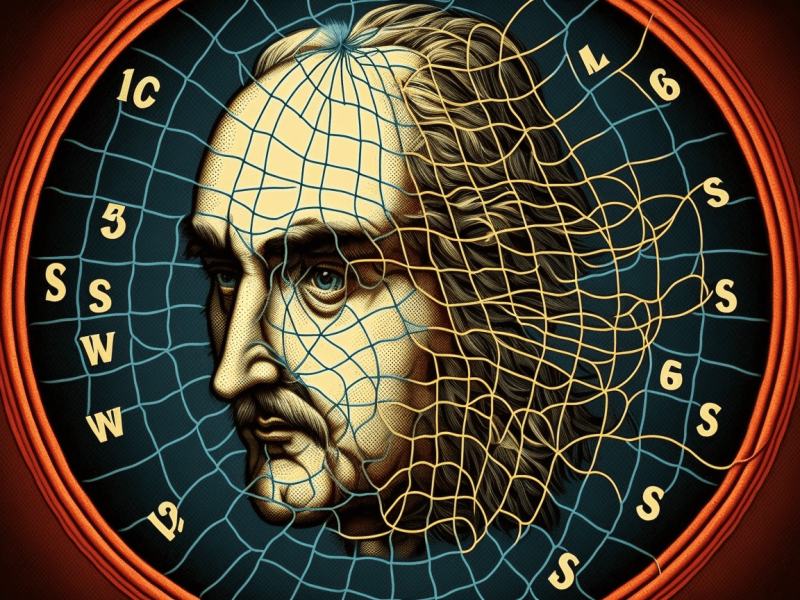Deep Learning: Get to Know it Better

Deep Learning – the overview:
Deep learning is a rapidly growing field of artificial intelligence that has the potential to revolutionize various industries. The term refers to a subset of machine learning algorithms inspired by human brain function, which enables computers to learn from vast amounts of data and improve their performance over time without being explicitly programmed. Deep learning has already been applied successfully in image recognition, speech recognition, natural language processing, robotics, and many other fields.
One fascinating aspect of deep learning is its ability to perform tasks that were once deemed impossible or too complex for machines. For instance, deep neural networks can recognize objects in images with higher accuracy than humans do, transcribe spoken words into text with near-human precision, generate realistic images or videos based on textual descriptions, and even beat professional players at complex board games such as Go. These breakthroughs have been made possible thanks to advances in hardware technology (e.g., GPUs) and software techniques (e.g., convolutional neural networks).
Despite its remarkable achievements so far, deep learning also faces significant challenges and limitations. One critical issue is the need for massive amounts of labeled training data to train accurate models – this requirement makes some applications impractical or unfeasible in domains where data is scarce or expensive to obtain. Additionally, deep learning systems are often perceived as black boxes since it’s challenging to interpret how they arrive at their decisions; this lack of transparency raises ethical concerns when deploying these systems in high-stakes settings such as healthcare or criminal justice.
Definition of DL
At its core, deep learning is a subset of machine learning that involves the creation and use of complex neural networks to analyze large sets of data. It can be thought of as a powerful tool for identifying patterns and making predictions based on highly nuanced information. Like peeling away layers of an onion, deep learning algorithms are designed to sift through vast amounts of data to identify hidden relationships between variables.
In essence, deep learning represents a significant leap forward in artificial intelligence technology due to its ability to process and interpret increasingly complex datasets with remarkable accuracy. Because these algorithms rely heavily on neural networks that mimic human brain function, they have been instrumental in revolutionizing industries such as healthcare, finance, and transportation by enabling rapid analysis and prediction capabilities.
Though it may seem like a daunting field to navigate for those without technical expertise in computer science or mathematics, the potential applications of deep learning cannot be overstated. As researchers continue to refine their methods and develop new approaches for working with ever-larger volumes of data, there is no doubt that this exciting area will continue to transform our understanding of everything from climate change patterns to consumer behavior trends.
As we delve deeper into the fascinating world of deep learning, one key question must be asked: how does this technology work? By examining the underlying mechanisms behind neural network design and training processes, we can begin to gain a better appreciation for the tremendous potential that lies ahead in this rapidly evolving field.
How Does it Work
To understand how deep learning works, it is important to first grasp the basic concept of artificial neural networks (ANNs). ANNs are computing systems that were developed with a structure and functionality similar to biological neural networks found in the human brain. They consist of multiple layers of interconnected nodes or neurons that process information through complex mathematical computations.
Deep learning uses ANNs as its foundation but takes it further by adding more layers and increasing the complexity of the network. The term “deep” refers to these additional layers, which allow for more intricate patterns to be recognized and analyzed. This increased depth also requires large amounts of data for training, which can be processed efficiently with specialized hardware such as graphics processing units (GPUs).
The training process involves feeding vast amounts of labeled data into the network, allowing it to learn and create connections between inputs and outputs. As the network learns from this data, it adjusts its internal parameters until it can accurately predict outcomes for unseen data. This ability to generalize from examples is what makes deep learning so powerful, enabling applications across various domains such as computer vision, natural language processing, speech recognition, and robotics.
In summary, deep learning builds on top of traditional ANN architectures by increasing their depth and complexity. It relies heavily on large amounts of labeled data for training and leverages specialized hardware like GPUs for faster computation. With this approach, deep learning has achieved remarkable success in solving challenging problems across different fields through pattern recognition and generalization capabilities. In the next section, we will explore some popular applications of deep learning in detail.
Applications of Deep Learning
Deep learning is a subset of machine learning that utilizes neural networks to simulate the human brain and enable machines to learn from experience. With its ability to handle large amounts of data, deep learning has revolutionized several industries by delivering unprecedented accuracy in complex tasks such as image recognition, speech recognition, natural language processing, and more.
The applications of deep learning are vast and varied. In healthcare, it is used for diagnosing diseases based on medical images, predicting patient outcomes, and developing personalized treatment plans. In finance, it helps detect frauds and anomalies in transactions while also providing insights into market trends. The automotive industry uses it for self-driving cars that can perceive their surroundings and make decisions accordingly. Other fields like agriculture, retail, entertainment, and security have also benefited from this technology.
One notable example of a deep learning application is Google’s AlphaGo program which defeated world champion Lee Sedol in a game of Go. This achievement demonstrated how far AI had come regarding handling uncertainty through probabilistic reasoning. Another significant development was OpenAI’s GPT-3 (Generative Pre-trained Transformer 3) model capable of generating coherent texts with high levels of accuracy even beyond what humans typically produce.
In summary, the range of applications offered by deep learning continues to expand daily across various sectors worldwide. As we delve deeper into the possibilities presented by this technology, there seems no limit to what we can achieve using artificial intelligence.
Moving onto Types Of Deep Learning Networks…
Types of Deep Learning Networks
What distinguishes deep learning from other types of machine learning is the use of neural networks. These are composed of layers of interconnected nodes that simulate the workings of a human brain by passing information between them. In essence, deep learning networks learn to recognize patterns in data through multiple stages, each building on what was learned in the previous one.
There are several types of deep learning networks, including convolutional neural networks (CNNs), recurrent neural networks (RNNs), and generative adversarial networks (GANs). CNNs are commonly used for image recognition tasks because they can identify features such as edges and curves at different levels of abstraction. RNNs, on the other hand, work well with sequential data like speech or text because they have a feedback loop that allows information to be passed back into earlier parts of the network. GANs consist of two neural networks: a generator that creates samples similar to those in the training set, and a discriminator that tries to distinguish between these generated samples and real ones.
Each type has its strengths and weaknesses depending on the problem being tackled. For example, while CNNs excel at recognizing visual patterns, they may not perform as well when dealing with abstract concepts like language comprehension. Conversely, RNNs might struggle with identifying visual objects but could be better suited for natural language processing tasks where context matters.
How do we compare these various architectures? What metrics should we use when evaluating their performance? We will examine some examples of both advantages and limitations in subsequent sections to understand how best practice recommendations apply across contexts.
Advantages And Limitations
Deep learning is a subset of machine learning that involves training deep neural networks to recognize patterns in data. It has gained widespread popularity due to its ability to surpass traditional algorithms and models in tasks such as image recognition, speech understanding, natural language processing, and many more. However, despite its successes, deep learning also has its limitations.
One advantage of deep learning is that it can learn from vast amounts of data without being explicitly programmed. This makes the process of building complex models much easier than with other methods. Deep learning also allows for automatic feature extraction, which means that it can identify important features within raw data on its own. Moreover, deep learning models are highly flexible and adaptable since they have multiple layers where each layer computes an abstraction or representation of the previous one.
However, there are also some limitations to deep learning that need addressing. Firstly, these models require large datasets for optimal performance; otherwise, overfitting may occur resulting in poor generalization abilities when presented with new unseen data. Secondly, deep learning requires significant computational power and memory resources during both the training and inference phases which might not be available all the time. Lastly, unlike traditional algorithms whose outputs were easily interpretable by humans after encoding domain knowledge into them manually through rule-based systems or decision trees, etc., deep learning models produce outputs as black boxes making their interpretation difficult.
In conclusion, while there are certain advantages and disadvantages associated with using deep learning technologies for solving real-world problems at scale; however, it remains a promising field enabling us to achieve remarkable results across various domains such as healthcare diagnostics or autonomous driving cars etcetera but requiring careful considerations regarding dataset sizes availability along with computational costs involved before deploying trained models in production environments successfully.
Conclusion
Deep learning is a subset of machine learning that uses artificial neural networks to learn and make decisions based on data. These networks are composed of layers of interconnected nodes that hierarchically process information, allowing for the detection of complex patterns and relationships within datasets.
One example of deep learning in action is its use in image recognition technology. By analyzing millions of images, these neural networks can identify objects with remarkable accuracy, making it possible for automated systems to recognize faces or detect cancer cells in medical scans.
While deep learning has shown tremendous potential across a wide range of applications, including natural language processing and self-driving cars, there are also limitations to consider. One challenge is the need for large amounts of labeled training data to teach the network how to perform specific tasks effectively.
Despite these challenges, the promise of deep learning continues to inspire researchers and innovators alike. As we continue to explore this exciting field, we will undoubtedly discover new ways to harness the power of artificial intelligence and enhance our understanding of the world around us.
Frequently Asked Questions
What Is The Difference Between Deep Learning And Machine Learning?
In the current digital age, machine learning, and deep learning are two popular subsets of artificial intelligence (AI). Although they share similarities in terms of their overall goal to develop machines that can learn from data, there is a fundamental difference between these two approaches. This article will explore what distinguishes deep learning from traditional machine learning.
Difference between Deep Learning and Machine Learning:
Machine learning algorithms sequentially extract features from the input data and map them to output labels. In contrast, deep learning uses artificial neural networks with multiple layers to extract complex patterns and relationships within the data. According to a recent survey conducted by Deloitte, 58% of companies have adopted AI-powered systems for better decision-making processes.
Deep learning has several advantages over traditional machine learning techniques. Firstly, it requires less feature engineering as the neural network learns to identify relevant features for prediction tasks. Secondly, deep learning models can handle large datasets with high-dimensional inputs more efficiently due to their ability to parallelize computations across different nodes or GPUs.
However, deep learning also has some limitations such as its dependence on vast amounts of labeled training data and the computational power required during model training. Therefore, selecting an appropriate technique depends on various factors such as dataset size, the complexity of the problem statement, available resources, etc.
Conclusion:
To summarize, while both machine learning and deep learning aim to develop intelligent systems capable of performing complex tasks autonomously; they differ significantly in their approach to attaining this objective. Organizations need to understand which method suits best their applications’ requirements before implementing one over another.
Can Deep Learning Be Applied To Non-numeric Data, Such As Text Or Images?
Deep learning is a subset of machine learning that involves the use of artificial neural networks with multiple layers to analyze complex data. This type of advanced technology has been increasingly applied in modern industries such as healthcare, finance, and transportation for effective decision-making processes. Deep learning techniques can be used for various applications, including natural language processing (NLP), computer vision, speech recognition, and image classification.
One key advantage of deep learning over traditional machine learning algorithms is its ability to process non-numeric or unstructured data types such as text and images. The application of deep learning to these domains enables machines to learn from raw data without human intervention. With the help of convolutional neural networks (CNNs) and recurrent neural networks (RNNs), deep learning models can recognize patterns and features within large datasets consisting of pictures, audio files, or texts.
To further illustrate how deep learning can be applied to non-numeric data types, consider an example where a deep neural network could be trained on a dataset containing millions of handwritten digit images. After being trained on this vast amount of information using backpropagation algorithms, the model would achieve high accuracy by recognizing new digits it had never seen before. As another example, a CNN-based architecture could automatically label objects in an image through multi-level feature extraction followed by pattern recognition.
In summary, the application of deep learning to non-numeric data types such as text and images provides powerful tools for analyzing complex real-world problems across different domains. By leveraging innovative technologies such as CNNs and RNNs that mimic human brain functionality at scale, we have unlocked unprecedented performance capabilities beyond what was possible with traditional machine learning methods alone. These advancements hold immense potential for improving our daily lives while also unlocking valuable insights into previously unsolvable challenges faced by society today.
What Are The Ethical Implications Of Using Deep Learning In Decision-making Processes?
The significant impact of deep learning on decision-making processes has raised concerns about the ethical implications associated with its use. The ability to process large volumes of data, detect patterns and make predictions through machine learning algorithms has enabled organizations to automate critical decisions that affect individuals’ lives.
One anticipated objection is that deep learning can reduce human bias in decision-making by relying solely on objective data analysis. However, this argument overlooks the fact that algorithms are only as unbiased as their creators. Biases exist within the datasets used to train the algorithms, which may perpetuate existing social inequalities or reinforce discriminatory practices. Additionally, there is a risk of “black box” decision-making where it becomes challenging to understand how an algorithm arrived at a particular conclusion, making it difficult for individuals to challenge unfair or inaccurate decisions.
Another ethical concern is related to privacy violations resulting from deep learning’s ability to collect vast amounts of personal data without explicit consent. This raises questions about who owns and controls such data and whether individuals have sufficient control over how their information is collected, processed, and shared. It also highlights the need for transparency and accountability in decision-making processes based on deep learning technologies.
Tip: As society continues to embrace artificial intelligence technology like Deep Learning – we must be aware of these risks while taking full advantage of its benefits. It’s important we encourage dialogue between policymakers, industry experts, and end-users alike so that everyone understands both sides before any potential damage occurs.
Find out more about Deep Learning
Deep Dream Artificial Intelligence – Computer Vision
DeepDream is a computer vision program that uses a convolutional neural network to find and enhance patterns in images via algorithmic pareidolia.
LLM in Conversational AI – what can a Large Language Model Do?
Large language models have revolutionized conversational AI, with strengths & weaknesses. Development opportunities exist, but misuse/abuse must be monitored. “Great power, great responsibility” for large language models.
Deep Belief Network – Mindblowing Potential
DBNs enable us to uncover hidden patterns in data, enabling improved decision-making & social progress.
Recurrent Neural Networks – The superintelligent Network
RNNs offer powerful modeling of seq. data, with advanced methods overcoming training chal. Concerns remain but potential for many appl. in NLP, speech recog. & time series forecasting is great.
Convolutional Neural Network – Shaping the Future
CNNs are deep learning models used for computer vision and image recognition tasks. They learn to extract features from images and classify them for various purposes. Challenges arise with large datasets and limited computing resources, but CNNs have been applied successfully to many domains, such as medical diagnosis and autonomous driving.
Support Vector Machines – Discovering new Possibilities
SVM is a powerful ml algorithm used for various applications like text classification, image recognition and bioinformatics. It has real-world applications in industry and is an important tool in modern data science. Hyperparameter tuning is essential for optimizing performance.
Bayes Nets: Inside the Science of Reasoning
Bayes Nets enable us to make decisions with incomplete data while minimizing risk. They are becoming increasingly popular in ML and can be applied to many real-world scenarios. Understanding and using Bayes Nets can provide invaluable insights, leading to savings and better decision-making.
Large Language Models – Developed to Impress!
Large language models revolutionize NLP, providing more accurate preds & realistic text. GPT-3 has 175B parameters, a staggering number that highlights complexity & power. As AI tech evolves, we can only imagine the possibilities for large language models.
Generative Adversarial Networks – A Revolution in AI
Generative Adversarial Networks (GANs) offer a revolutionary approach to AI, capable of generating realistic images and data. Challenges remain, yet potential applications and breakthroughs await. Exciting times ahead!
Deep Learning Neural Nets – Discover unseen Intelligence now
Deep learning neural nets are revolutionizing AI with powerful applications, but there are challenges with data, computing power, and ethics. Exciting breakthroughs are ahead with continued investment and effort.










